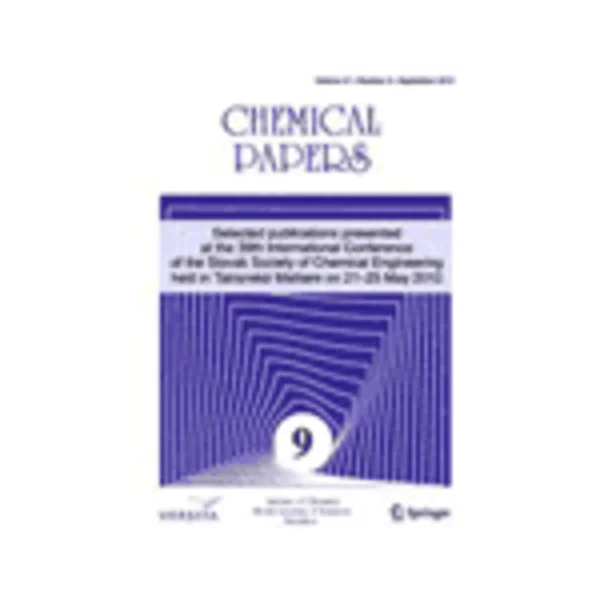-
evaluation of waste products in the synthesis of surfactants by yeasts
جزئیات بیشتر مقاله- تاریخ ارائه: 1392/07/24
- تاریخ انتشار در تی پی بین: 1392/07/24
- تعداد بازدید: 1001
- تعداد پرسش و پاسخ ها: 0
- شماره تماس دبیرخانه رویداد: -
the highest yields of biosurfactants were obtained by: (i) pseudozyma antarctica (107.2 g l−1) cultivated in a medium containing post-refining waste; (ii) pseudozyma aphidis (77.7 g l−1); and (iii)starmerella bombicola (93.8 g l−1) both cultivated in a medium with soapstock; (iv)pichia jadinii(67.3 g l−1) cultivated in a medium supplemented with waste frying oil. it was found that the biosurfactant synthesis yield increased in all strains when the cell surface hydrophobicity reached 70–80 %, enabling the microbial cells to make good contact with hydrophobic substrates. the lowest surface tension of the post-cultivation medium was from 32.0 mn m−1 to 37.8 mn m−1. however, this parameter (which was also determined by a drop collapse assay) was of limited use in monitoring biosurfactant synthesis in this study. the crude glycerol was not a good substrate for biosurfactant synthesis although, in the case of p. aphidis, 67.4 g l−1 of biosurfactants were obtained after cultivation in the medium supplemented with glycerol fraction (gf2). in a low-cost medium containing soapstock and whey permeate or molasses, about 90 g l−1 of mannosylerythritol lipids were synthesised by p. aphidis and approximately 40 g l−1 by p. antarctica.
مقالات جدیدترین رویدادها
-
استفاده از تحلیل اهمیت-عملکرد در ارائه الگوی مدیریت خلاقیت سازمانی و ارائه راهکار جهت بهبود
-
بررسی تاثیر ارزش وجوه نقد مازاد بر ساختار سرمایه شرکت های پذیرفته شده در بورس اوراق بهادار تهران
-
بررسی تأثیر سطح افشای ریسک بر قرارداد بدهی شرکت های پذیرفته شده در بورس اوراق بهادار تهران
-
بررسی تأثیر رتبه بندی اعتباری مبتنی بر مدل امتیاز بازار نوظهور بر نقد شوندگی سهام با تأکید بر خصوصی سازی شرکت ها
-
تأثیر آمیخته بازاریابی پوشاک ایرانی بر تصویر ذهنی مشتری پوشاک ایرانی (هاکوپیان)
-
بررسی آزمایشگاهی رفتار گسیختگی خاکهای سیمانی شده مصنوعی
-
همبستگی عزت نفس و پیشرفت تحصیلی در دانشجویان توانبخشی دانشگاه علوم بهزیستی و توان بخشی تهران
-
بررسی اپیدمیولوژیک آپاندیسیت خوشه ای در استان چهارمحال و بختیاری
-
تأثیر خوراکی عصاره گزنه بر بیان عامل رشد دگرگون کننده-بتا (tgf-β) در میزبان های واجد تومور
-
بررسی رفتار پی های رادیه- ریزشمع در خاک رس کرمان (مطالعه موردی: برج جمهوری)
مقالات جدیدترین ژورنال ها
-
مدیریت و بررسی افسردگی دانش آموزان دختر مقطع متوسطه دوم در دروان کرونا در شهرستان دزفول
-
مدیریت و بررسی خرد سیاسی در اندیشه ی فردوسی در ادب ایران
-
واکاوی و مدیریت توصیفی قلمدان(جاکلیدی)ضریح در موزه آستان قدس رضوی
-
بررسی تاثیر خلاقیت، دانش و انگیزه کارکنان بر پیشنهادات نوآورانه کارکنان ( مورد مطالعه: هتل های 3 و 4 ستاره استان کرمان)
-
بررسی تاثیر کیفیت سیستم های اطلاعاتی بر تصمیم گیری موفق در شرکتهای تولیدی استان اصفهان (مورد مطالعه: مدیران شرکتهای تولیدی استان اصفهان)
-
بررسی رابطه باورهای فراشناختی با سلامت دانش آموزان دختر مقطع متوسطه
-
رابطه جدایی مالکیت از کنترل با محافظه کاری غیرشرطی حسابداری شرکت ها
-
تاثیر حاکمیت شرکتی بر ثبات مالی و دسترسی به خدمات مالی در بانک های پذیرفته شده در بورس اوراق بهادار تهران
-
بررسی رابطه بین ساختار مالکیت، ترکیب اعضای هیئت مدیره و سرعت گزارشگری مالی در شرکت های پذیرفته شده در بورس اوراق بهادار تهران
-
بررسی عملکرد انتشار اوراق مشارکت شهرداری مشهد بر اساس مدل swot -ahp




سوال خود را در مورد این مقاله مطرح نمایید :